Are you looking for the best neighborhoods in Buenos Aires to stay in, but not sure where to start? Whether you’re a digital nomad, a traveler seeking adventure, or an expat planning your next move, Buenos Aires offers a diverse range of neighborhoods to explore.
From the historical charm of San Telmo to the upscale allure of Recoleta and the modern luxury of Puerto Madero, there’s something for everyone.
This guide by ExpatPathways will help you navigate the unique characteristics, cost of living, and lifestyle offerings of each neighborhood, making it easier to find the perfect place that matches your needs and personality.
The Best Neighborhoods in Buenos Aires to Stay
1. Palermo
Palermo, the most popular neighborhood in Buenos Aires, stands out for its lively commercial and gastronomic scene. This sprawling area is divided into distinct enclaves like the historic and bohemian Palermo Viejo, the chic and trendy Palermo Soho, and the vibrant Palermo Hollywood, each offering a unique architectural style and ambiance.
The neighborhood buzzes with life day and night, attracting a young crowd with its eclectic mix of restaurants, cocktail bars, and boutiques. Palermo is also known for its green spaces, such as Parque Tres de Febrero, where picnickers can enjoy the rose garden, rowing lakes, and planetarium.
The neighborhood’s high cost of living is balanced by excellent public transportation and proximity to Buenos Aires’ major attractions, making it the city’s most complete and desirable neighborhood.
In addition to the varied nightlife and commercial activity, Palermo is also home to world-class cultural institutions like the Museo de Arte Latinoamericano de Buenos Aires (MALBA), which showcases contemporary Latin American masterpieces.
Museo Evita offers an insightful glimpse into the life of Eva Perón, adding a historical layer to the neighborhood’s multifaceted appeal. Whether you’re wandering the boutique-lined streets or exploring the expansive parks, Palermo offers something for everyone, making it a must-visit destination.

Palermo overview
- Quality of Life: 8.7 (average)
- Security: 8 – Generally safe, although caution is advised in some areas at night.
- Cost of Living: 6 – Higher cost due to its popularity and diverse offerings.
- Gastronomic Proposal: 9 – Eclectic restaurants, chic cocktail bars, and quirky cafes.
- Leisure: 9 – Vibrant nightlife, theaters, and cultural venues.
- Things to Do: 9 – MALBA, Museo Evita, Parque Tres de Febrero.
- Accessibility: 9 – Excellent public transportation options and proximity to major attractions.
| Advantages | Disadvantages |
|---|---|
| Lively commercial and gastronomic scene | High cost of living |
| Distinct enclaves with unique architectural styles | Some areas may require caution at night |
| Eclectic mix of restaurants, cocktail bars, and boutiques | Difficult to find affordable accommodation |
| Green spaces like Parque Tres de Febrero | Not suitable for those seeking a quiet neighborhood |
| Home to cultural institutions like MALBA and Museo Evita | |
| Excellent public transportation | |
| Proximity to major attractions | |
| Vibrant nightlife |
2. Recoleta
Recoleta is one of Buenos Aires’ most exclusive neighborhoods, known for its Parisian-style architecture, vintage flair, and upscale living. Home to lavish former palaces, posh boutiques, and iconic cultural landmarks, it combines modernity with historical elegance.
Recoleta is famous for its cemetery, where national icons like Eva Perón rest in elaborate tombs, and the National Museum of Fine Arts, which showcases Argentine masterpieces.
With its excellent gastronomic, cultural, and artistic scene, Recoleta also provides easy access to the city’s best parks and plazas, as well as key corridors leading to Costanera Norte. Despite the elevated cost of living, it remains a prime destination for those seeking a strollable, elegant area close to attractions like Palermo and Barrio Norte.
In addition to its historical and cultural attractions, Recoleta boasts grassy plazas like Plaza Francia, which hosts a weekend handicrafts market that draws both locals and tourists alike.
The neighborhood’s many high-end restaurants, cafés, and designer boutiques cater to an affluent crowd, while its proximity to Palermo and Barrio Norte ensures access to even more vibrant neighborhoods. As the most elegant and sophisticated area in Buenos Aires, Recoleta is a neighborhood that perfectly balances modern living with timeless charm.
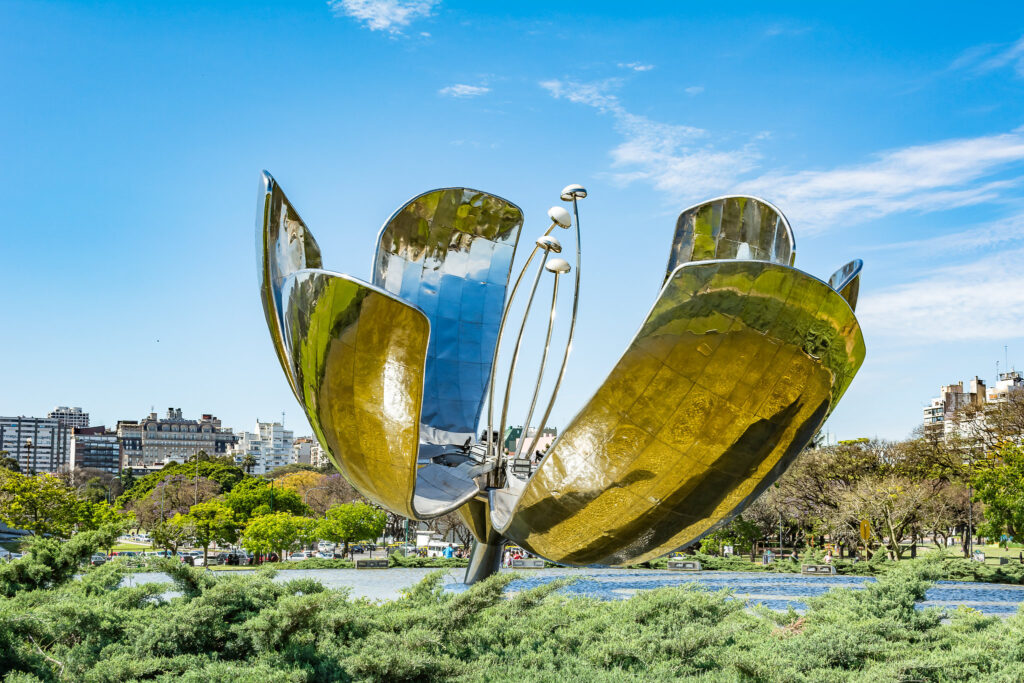
Recoleta Overview
- Quality of Life: 8.8 (average)
- Security: 9 – One of the safest neighborhoods in Buenos Aires.
- Cost of Living: 5 – High cost due to exclusivity and upscale amenities.
- Gastronomic Proposal: 8 – Upscale restaurants, cafés, and historic coffeehouses.
- Leisure: 9 – Cultural centers, theaters, and art galleries.
- Things to Do: 9 – Recoleta Cemetery, National Museum of Fine Arts, Plaza Francia.
- Accessibility: 9 – Central location with easy access to transportation.
| Advantages | Disadvantages |
|---|---|
| Parisian-style architecture | High cost of living |
| Upscale living and vintage flair | Exclusive and sometimes exorbitantly priced accommodations |
| Home to cultural landmarks like Recoleta Cemetery and National Museum of Fine Arts | Can feel isolated from the authentic Buenos Aires experience |
| Excellent gastronomic and cultural scene | Not ideal for those seeking a traditional, bohemian vibe |
| Proximity to key corridors and other vibrant neighborhoods | |
| Safe and elegant area |
3. San Telmo
San Telmo is the historic heart of Buenos Aires, known for its cobbled streets, old-world architecture, and bohemian vibe. Close to Puerto Madero and within the historic district of the city, it appeals to those who appreciate living in neighborhoods where the architecture and landscape reflect the city’s rich history.
The Mercado de San Telmo and Plaza Dorrego draw crowds of tourists, particularly on Sundays, when the famous flea market and street performers bring the neighborhood to life. The area is popular among expats and travelers, offering a range of hotels, hostels, and restaurants.
However, security has become a concern in recent years due to its proximity to the southern parts of the city. Upscale tango dinner-show venues, pop-up art galleries, and late-night bars provide an eclectic mix of entertainment, making San Telmo a vibrant choice for those seeking a lively, cultural environment.
Aside from the historic ambiance, San Telmo is famous for its strong culinary scene and antique shops lining Defensa Street. The picturesque Parque Lezama and the Museo Histórico Nacional offer a glimpse into Argentina’s past, while street murals and vibrant tango performances lend the neighborhood a unique charm.
Despite not being densely populated, San Telmo attracts tourists and locals alike, offering an experience that perfectly balances culture, history, and nightlife.
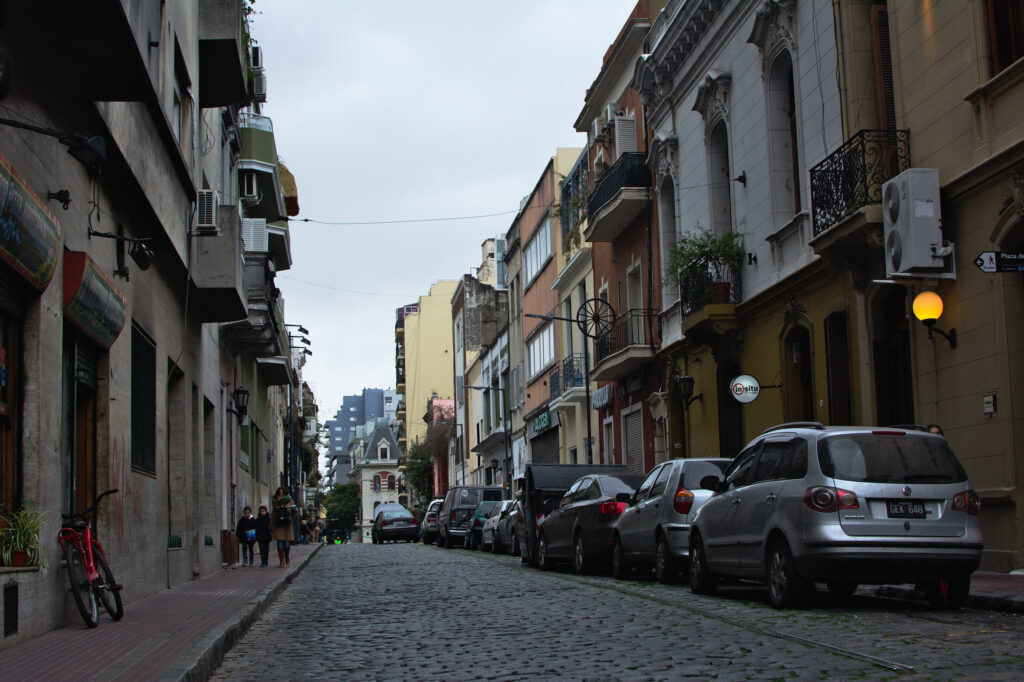
San Telmo Overview
- Quality of Life: 7.2 (average)
- Security: 6 – Some security issues due to proximity to the southern parts of the city.
- Cost of Living: 7 – Affordable compared to other neighborhoods.
- Gastronomic Proposal: 8 – Diverse culinary scene, steakhouses, and street food.
- Leisure: 8 – Tango venues, late-night bars, and pop-up art galleries.
- Things to Do: 8 – Plaza Dorrego, Mercado de San Telmo, Museo Histórico Nacional.
- Accessibility: 7 – Relatively well-connected but not as convenient as other areas.
| Advantages | Disadvantages |
|---|---|
| Historic charm with cobbled streets and old-world architecture | Security concerns due to proximity to southern parts of the city |
| Bohemian vibe | Old buildings with maintenance issues |
| Popular attractions like Mercado de San Telmo and Plaza Dorrego | Activity decreases significantly in the evenings |
| Strong culinary scene with diverse options | Not ideal for driving with private vehicles |
| Eclectic mix of entertainment, including tango venues and art galleries | |
| Vibrant nightlife |
4. Downtown (Centro)
Centro, often referred to as Microcentro, is the ideal neighborhood for expats, digital nomads, and travelers seeking a strategic base in Buenos Aires.
It comprises the neighborhoods of Monserrat, San Nicolás, and Retiro, with major arteries like Avenida Corrientes, Avenida 9 de Julio, Avenida Córdoba, and Avenida Leandro N. Alem connecting it to the rest of the city.
This central hub provides easy access to Palermo, San Telmo, Puerto Madero, and even the highways leading to the province.
The combination of government buildings, banks, financial institutions, and major companies creates a bustling atmosphere, particularly during the week. However, this also means that heavy pedestrian and vehicular traffic, as well as frequent street protests (“piquetes”), can disrupt travel plans.
Avenida Corrientes is known for its neon-lit theaters, casual pizza spots, and late-night bookstores, while Monserrat’s historic Plaza de Mayo is surrounded by the pink-hued Casa Rosada and colonial-style Cabildo museum. For those seeking the perfect mix of strategic location, cultural landmarks, and non-stop energy, Centro is the heartbeat of Buenos Aires.
Downtown (Centro) Overview
- Quality of Life: 7.8 (average)
- Security: 7 – Security fluctuates due to protests and heavy traffic.
- Cost of Living: 6 – Moderately expensive due to high demand and location.
- Gastronomic Proposal: 8 – Diverse mix of pizzerias, cafés, and international restaurants.
- Leisure: 8 – Teatro Colón, Obelisco, Avenida Corrientes, and historic cafes.
- Things to Do: 8 – Casa Rosada, Cabildo museum, Palacio Barolo.
- Accessibility: 9 – Excellent access to transportation and major city attractions.
| Advantages | Disadvantages |
|---|---|
| Strategic central location | Heavy pedestrian and vehicular traffic |
| Easy access to major neighborhoods and highways | Frequent street protests (piquetes) |
| Iconic landmarks like the Obelisco and Teatro Colón | Limited green spaces |
| Diverse mix of pizzerias, cafés, and international restaurants | Office buildings dominate the area, although it’s changing post-pandemic |
| Cultural landmarks and historic sites | Homeless people often sleep in the area at night |
| Excellent transportation links |
5. Belgrano
Located in the northern part of Buenos Aires, Belgrano borders Palermo and Colegiales to the south, Villa Ortúzar and Villa Urquiza to the west, Núñez to the north, and the Río de la Plata to the east.
This neighborhood is highly sought after due to its safety and perfect balance between residential areas, commercial activity, and green spaces. Avenida Cabildo, the main thoroughfare of Belgrano, is an extension of Avenida Santa Fe and serves as the vibrant shopping hub of the neighborhood.
Belgrano is known for its microzones, offering a variety of attractions without the need to leave the neighborhood.
Among its highlights is Barrio Chino, a compact Chinatown popular among locals and tourists alike, where specialty supermarkets, street-food stalls, and noodle joints thrive.
The picturesque Barrancas de Belgrano park provides a peaceful retreat with its bandstand, often used for tango and folk concerts. Although Belgrano is well-connected via public transport, navigating the city from here can be challenging due to traffic congestion on weekdays.
Despite the high cost of living, Belgrano remains a safe and attractive option for those seeking upscale living in Buenos Aires.
Belgrano Overview
- Quality of Life: 8.5 (average)
- Security: 8 – Generally safe, especially in upscale residential enclaves.
- Cost of Living: 6 – Higher cost due to safety and exclusivity.
- Gastronomic Proposal: 8 – Diverse restaurants, cafés, and Barrio Chino eateries.
- Leisure: 8 – Barrancas de Belgrano, upscale bars, and local theaters.
- Things to Do: 8 – Barrio Chino, Barrancas de Belgrano, Museo Sarmiento.
- Accessibility: 9 – Well-connected via public transportation and major avenues.
| Advantages | Disadvantages |
|---|---|
| Safe and upscale residential areas | High cost of living |
| Balance of residential, commercial, and green spaces | Limited hotel and hostel options |
| Attractions like Barrio Chino and Barrancas de Belgrano | Location is somewhat far from major tourist areas like Downtown, San Telmo, and Puerto Madero |
| Diverse gastronomic scene | |
| Well-connected via public transportation |
6. Villa Crespo
Villa Crespo, a bohemian and centrally located neighborhood, is known for its mix of low-rise homes and modern real estate developments. It offers a rich selection of residences, hotels, and a thriving gastronomic scene.
Specialty cafés, clothing outlets, and specialty shops cater to a diverse crowd. The neighborhood is well-connected by public transportation and provides an intermediate option for those who wish to experience Buenos Aires without compromising on security or cost of living. The peaceful and accessible area borders Chacarita, Palermo, and Almagro.
Villa Crespo’s late-night scene is buzzing, with speakeasy-style cocktail bars, long-standing cafes, and tango venues like Villa Malcolm hosting both beginners and veteran dancers. Murillo Street is a hotspot for leather shops, while traditional delis serve the neighborhood’s large Jewish community.
Villa Crespo’s eclectic blend of culture, nightlife, and convenience makes it a popular choice among expats and travelers seeking a balance between bohemian flair and urban sophistication.
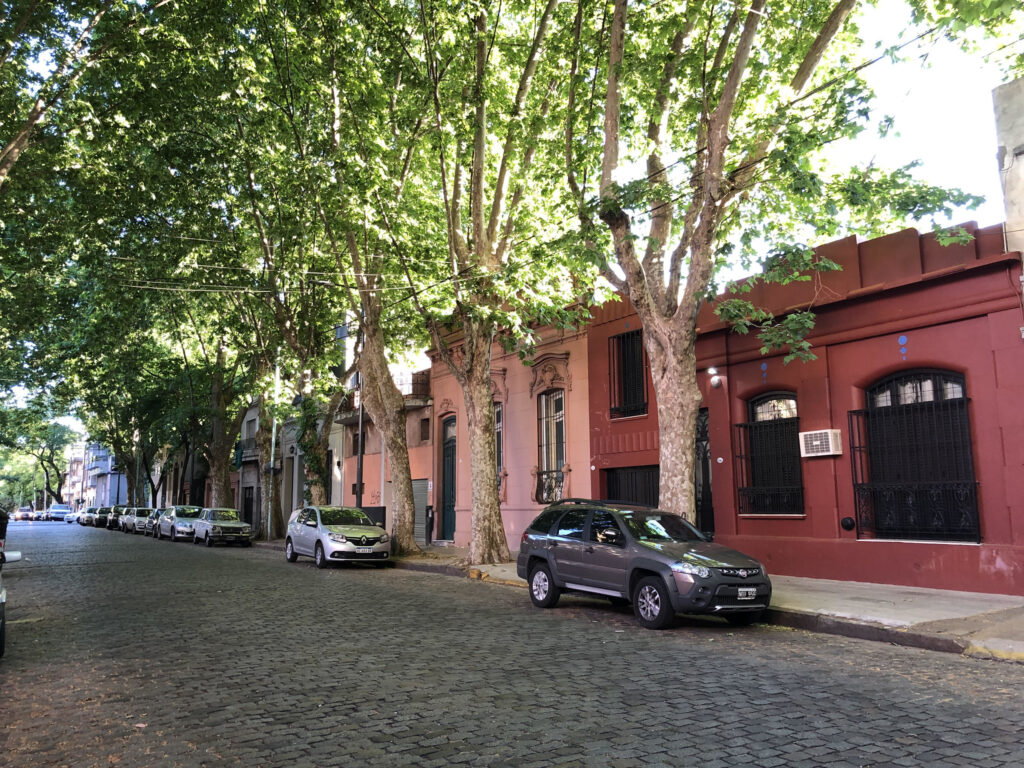
Villa Crespo Overview
- Quality of Life: 8 (average)
- Security: 8 – Considered safe, with a tranquil vibe.
- Cost of Living: 7 – Affordable compared to upscale neighborhoods.
- Gastronomic Proposal: 8 – Specialty cafés, cocktail bars, and international cuisine.
- Leisure: 8 – Tango venues, cocktail bars, and traditional delis.
- Things to Do: 7 – Murillo Street shops, Villa Malcolm, and nearby activities.
- Accessibility: 8 – Well-connected to Palermo, Chacarita, and Almagro.
| Advantages | Disadvantages |
|---|---|
| Bohemian and centrally located | Security can vary over time and location |
| Mix of low-rise homes and modern developments | Not a major area for museums or iconic landmarks |
| Thriving gastronomic scene | Limited hotel options |
| Safe and tranquil vibe | |
| Well-connected to Palermo, Chacarita, and Almagro | |
| Buzzing late-night scene with cocktail bars and tango venues | |
| Eclectic blend of culture, nightlife, and convenience |
7. Abasto/Balvanera
Abasto, an area within the Balvanera neighborhood, is where tango, tradition, and immigration intersect. Although it’s not officially recognized as a separate neighborhood, the historic Mercado de Abasto has given it a distinct identity.
From the early 20th century, this area was a hub of commercial and working-class activity centered around the old Abasto Market, which has since transformed into a modern shopping center. The neighborhood’s streets are steeped in history, with buildings that reflect the area’s immigrant past.
Abasto is closely associated with the iconic Carlos Gardel, who took his first steps as a tango star here. Today, visitors can explore the Casa Museo Carlos Gardel, where the singer lived with his mother. The area has a thriving cultural scene with numerous theaters and independent cinemas.
While it offers a unique blend of bohemian culture and porteño spirit, the neighborhood is not without its challenges, such as street vendors, security concerns, and deteriorating infrastructure. Despite these issues, Abasto remains a vibrant, character-filled area for those seeking an authentic Buenos Aires experience.
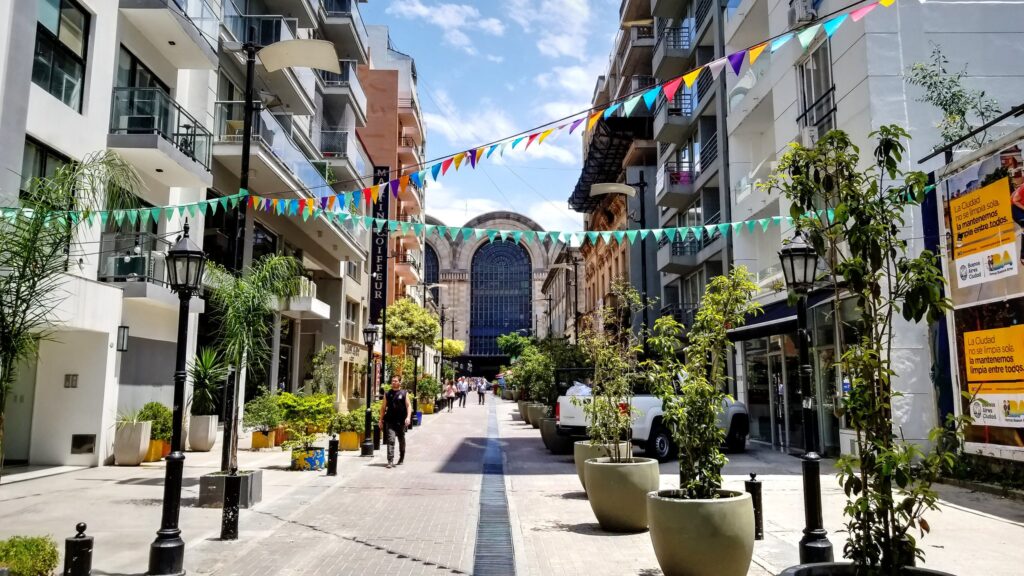
Abasto/Balvanera Overview
- Quality of Life: 6.7 (average)
- Security: 5 – Security is a concern due to street vendors and deteriorating infrastructure.
- Cost of Living: 8 – Relatively affordable compared to other neighborhoods.
- Gastronomic Proposal: 7 – A mix of traditional and modern eateries, cafés, and street food.
- Leisure: 7 – Tango, theaters, and independent cinemas add cultural vibrancy.
- Things to Do: 7 – Casa Museo Carlos Gardel, theaters, and Mercado de Abasto.
- Accessibility: 7 – Well-connected by public transportation but traffic congestion can be an issue.
| Advantages | Disadvantages |
|---|---|
| Rich in history and culture | Security concerns due to street vendors and deteriorating infrastructure |
| Affordable cost of living | Few green spaces |
| Thriving cultural scene with theaters and independent cinemas | Restaurants, bars, and street food vendors generate dirt and waste |
| Iconic attractions like Casa Museo Carlos Gardel | |
| Unique blend of bohemian culture and porteño spirit |
8. Caballito
Located in the geographic center of Buenos Aires, Caballito is one of the city’s largest and most comprehensive neighborhoods in terms of entertainment, public transportation, and commercial activity. The neighborhood has seen rapid growth in recent years, with modern apartment buildings transforming its architectural landscape and driving significant economic progress.
Caballito is particularly popular among the middle class and boasts several green spaces, including Parque Rivadavia, which serves as the hub of leisure activities for local residents. Key north-south and east-west avenues provide excellent connectivity. Institutions like Club Ferro Carril Oeste and the University of Buenos Aires breathe life and color into the neighborhood, attracting sports fans and students alike.
The family-friendly atmosphere and bustling local businesses make Caballito a highly sought-after neighborhood for both residential and commercial purposes. Its central location provides easy access to other parts of the city, making it an ideal choice for those seeking a balance between convenience and community spirit.
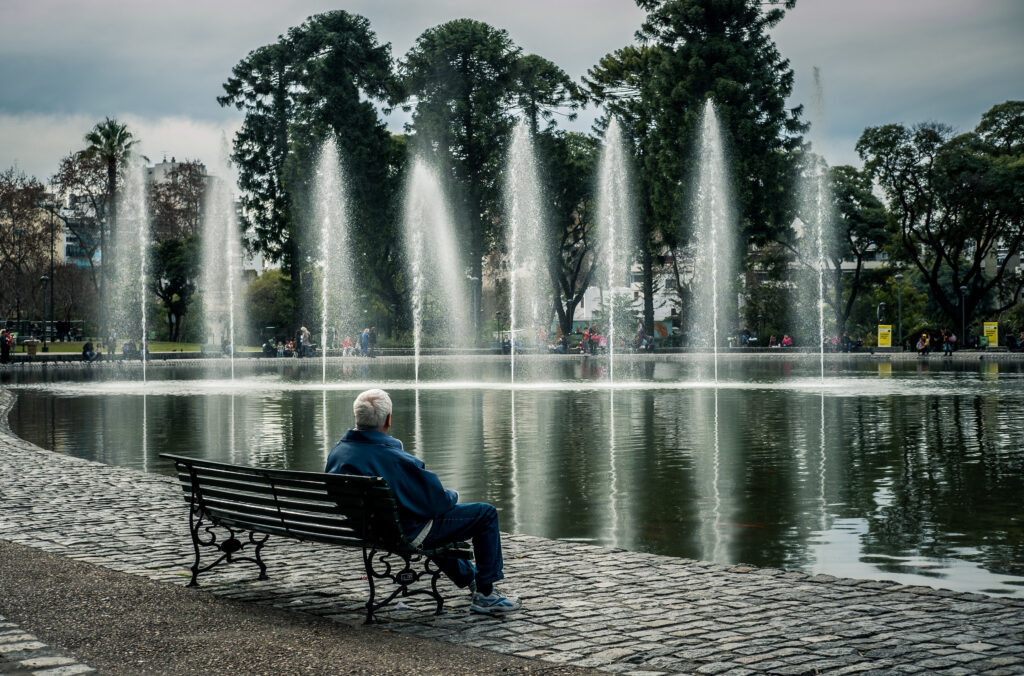
Caballito Overview
- Quality of Life: 8.3 (average)
- Security: 8 – Considered safe with a family-friendly atmosphere.
- Cost of Living: 7 – Affordable for middle-class residents.
- Gastronomic Proposal: 8 – A variety of local restaurants and cafés.
- Leisure: 8 – Club Ferro Carril Oeste, Parque Rivadavia, and Avenida Rivadavia shops.
- Things to Do: 8 – Parque Rivadavia, Club Ferro Carril Oeste, and local activities.
- Accessibility: 9 – Centrally located with excellent transportation links.
| Advantages | Disadvantages |
|---|---|
| Centrally located with excellent transportation links | Few tourist attractions |
| Family-friendly atmosphere | Recent real estate development has caused issues with electricity supply, especially in summer |
| Green spaces like Parque Rivadavia | |
| Popular among the middle class | |
| Variety of local restaurants and cafés | |
| Bustling local businesses | |
| Comprehensive entertainment options |
9. Puerto Madero
Puerto Madero is the most modern neighborhood in Buenos Aires, offering stunning views of the Río de la Plata. One of the last areas of the city to be developed, it combines early 20th-century dockside architecture with sleek skyscrapers housing multinational corporations and luxury apartments.
The high cost of living is justified by its upscale steakhouses, high-rise hotels, and unparalleled views. The neighborhood’s location near San Telmo, La Boca, and downtown Buenos Aires makes it a convenient base for exploring the city.
Known for its clean, safe, and aesthetically pleasing streets, Puerto Madero is home to the graceful Puente de la Mujer bridge and the Costanera Sur Ecological Reserve, a wildlife-rich park that attracts joggers and families alike.
Upscale restaurants and luxury accommodations are a staple in Puerto Madero, offering visitors a sophisticated and exclusive experience. For those who can afford it, Puerto Madero represents the pinnacle of modern urban living in Buenos Aires.
Puerto Madero Overview
- Quality of Life: 8.8 (average)
- Security: 9 – Safe, clean, and well-maintained.
- Cost of Living: 4 – One of the most expensive neighborhoods in Buenos Aires.
- Gastronomic Proposal: 9 – Upscale steakhouses, fine dining, and waterfront cafés.
- Leisure: 8 – Tango dinner shows, upscale bars, and trendy venues.
- Things to Do: 8 – Puente de la Mujer, Costanera Sur Ecological Reserve, and nearby attractions.
- Accessibility: 10 – Proximity to the Centro, San Telmo, and La Boca.
| Advantages | Disadvantages |
|---|---|
| Modern neighborhood with stunning views | Very high cost of living |
| Safe, clean, and well-maintained | Limited neighborhood identity |
| Upscale steakhouses and fine dining | Not suitable for middle-class, everyday Buenos Aires life |
| Proximity to major attractions like San Telmo and La Boca | Small neighborhood |
| Attractions like Puente de la Mujer and Costanera Sur Ecological Reserve | |
| Excellent accessibility |
Last Considerations
Wondering which neighborhood in Buenos Aires is the best fit for your lifestyle as a digital nomad, traveler, or expat? Choosing the right neighborhood requires careful consideration of security (a hot topic in Buenos Aires), accessibility via public transport or major avenues, and the activities each area offers.
For example, some neighborhoods excel in gastronomy, while others are famous for their historical landmarks. The cost of living is also a crucial factor. Historically, Buenos Aires has a clear north-south divide, with the north being more affluent and comfortable at a higher cost, while the south offers a more budget-friendly lifestyle but remains in development.
To help you decide:
- Security: Evaluate the level of safety in each neighborhood.
- Accessibility: Assess public transportation, streets, and proximity to places of interest.
- Activities Offered: Determine whether you prioritize gastronomy, history, art, or nightlife.
Our advice is to identify the purpose of your stay and choose the best neighborhood accordingly. Buenos Aires is exceptionally well-connected, meaning you can easily reach any destination within minutes.
For more comprehensive neighborhood insights and tips, head over to ExpatPathways and discover the best neighborhoods in Buenos Aires to stay!
(Featured Image Source: Nathalia Segato/unsplash.com)


